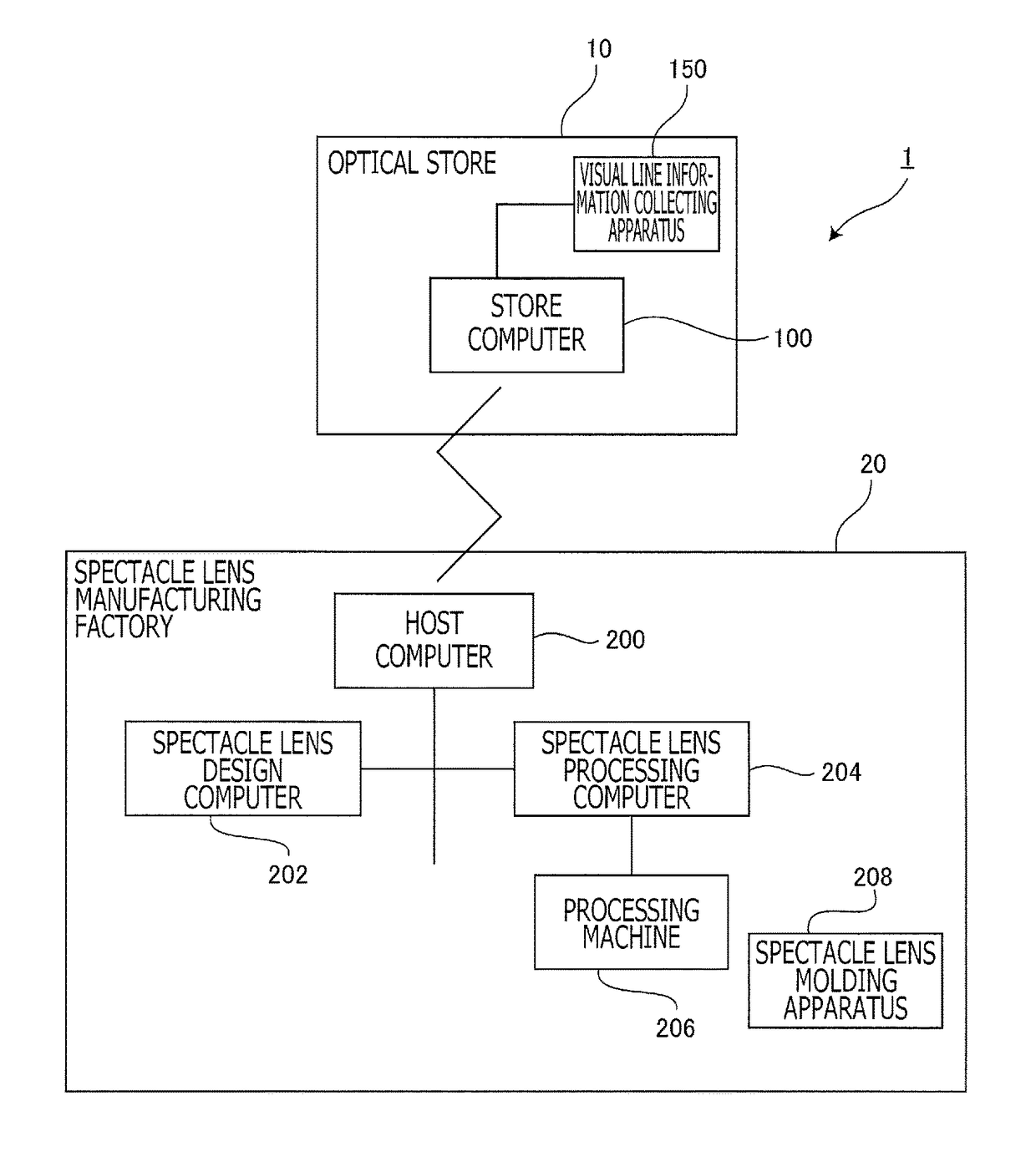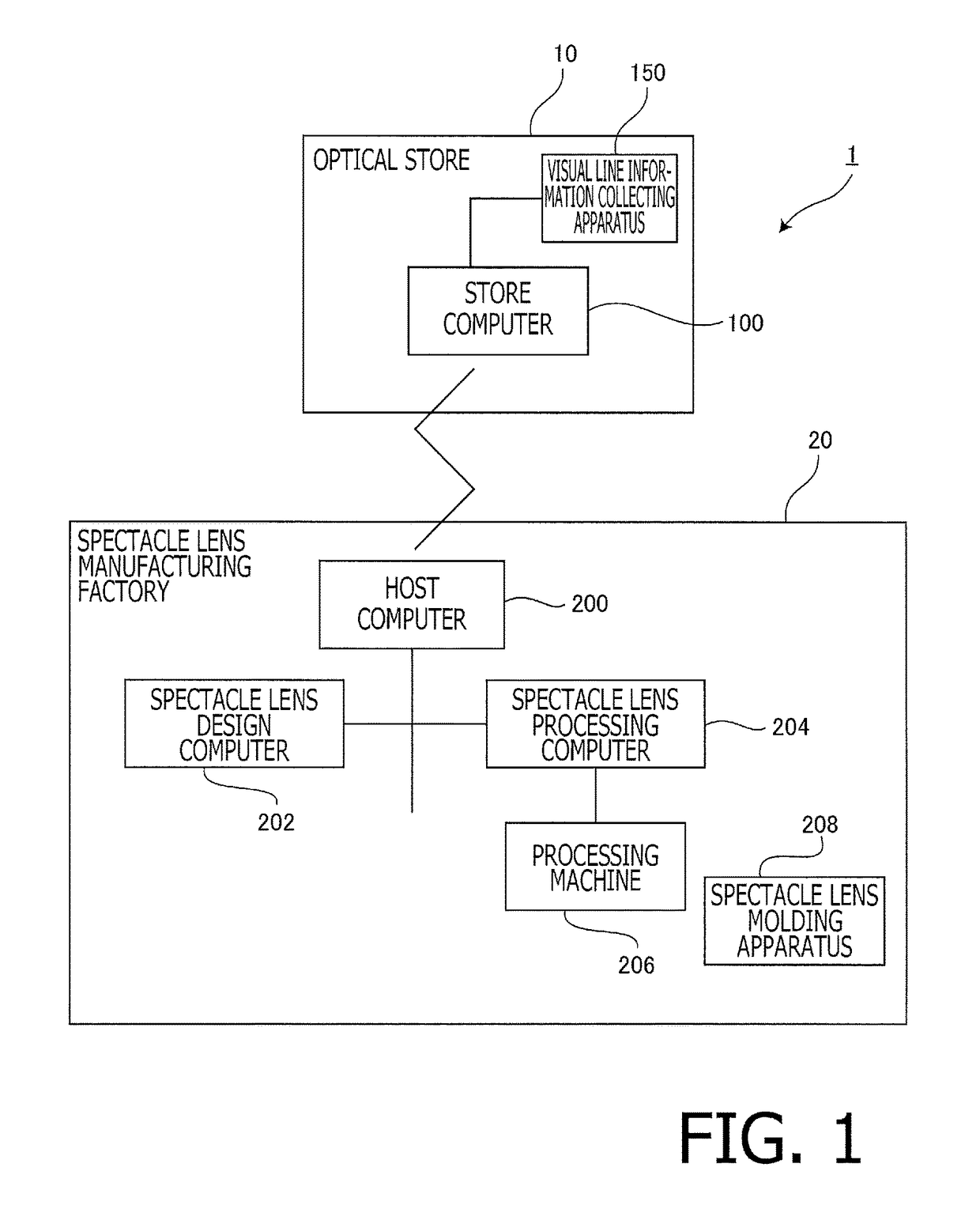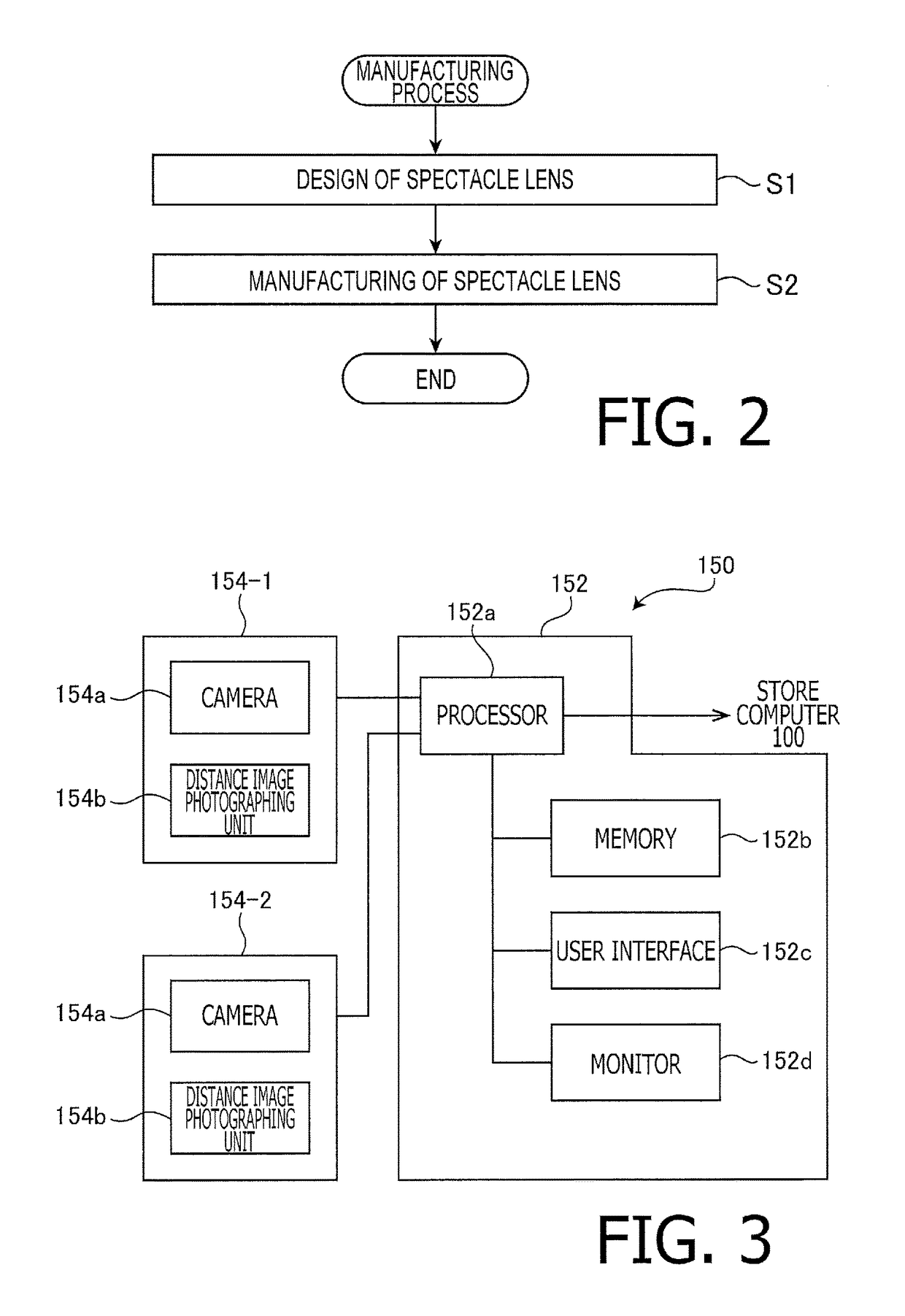Spectacle lens design system, supply system, design method and manufacturing method
a technology of supply system and spectacle lens, applied in the field of designing and manufacturing spectacle lens, can solve the problems of blur, shaking or distortion, and the inability to simply introduce the measurement technology of visual lines into the design of spectacle lenses, and achieve the effect of preventing the occurrence of an error of direction and distance of visual lines
- Summary
- Abstract
- Description
- Claims
- Application Information
AI Technical Summary
Benefits of technology
Problems solved by technology
Method used
Image
Examples
example 3
[0162]In the following, the example 3 regarding a visual line information collecting process is explained. As explained in detail below, in the example 3, wearing parameters are collected simultaneously and in series with the visual line information while considering the pose of the head of the scheduled wearer S. It should be noted that, in the example 3, explanations overlapping with those of the example 1 are omitted or simplified. Furthermore, in the example 3, to configurations and steps which are substantially the same as those of the example 1, the same reference numbers are assigned and explanation thereof is omitted or simplified.
[0163]FIG. 14 illustrates a use condition of a visual line information collecting apparatus 150N according to the example 3. Since the configuration of the visual line information collecting apparatus 150N of the example 3 is the same as the configuration (FIG. 11) in the example 2, explanation thereof is omitted. As shown in FIG. 14, the visual li...
example 1
Design Example 1
[0228]FIG. 25A shows transmission astigmatism distribution of a lens before optimization according to the design example 1, and FIG. 25B shows transmission astigmatism distribution of a lens after optimization according to the design example 1. In the design example 1, the evaluation function is defined such that the transmission astigmatism becomes lower than or equal to 2.0 diopter (2.0D) within the use region (a region surrounded by an ellipse in FIGS. 25A and 25B) calculated in step S203 (calculation of use region and use frequency) in FIG. 23. As shown in FIG. 25B, since the transmission astigmatism is suppressed to a value lower than or equal to 2.0D in the use region, shake and distortion in the use region are reduced.
example 2
Design Example 2
[0229]FIG. 26A shows distribution of logMAR visual acuity before optimization according to the design example 2, and FIG. 26B shows distribution of logMAR visual acuity after optimization according to the design example 2. Details about logMAR visual acuity can be seen, for example, in Japanese Patent Publication No. 4033344B. In the design example 2, the evaluation function is defined such that, within the use region in a distance portion situated on an upper side of the fitting point FP on the lens, an area in which the logMAR visual acuity becomes lower than or equal to 0.155 (0.7 or more in terms of decimal visual acuity) becomes larger than 190 mm2 on the basis of an area on the distribution diagram (not on the basis of an area on the lens). As shown in FIG. 26B, in the design example 2, assuming a situation where a far point is mainly viewed, for example, during car driving, a wide range in which the scheduled wearer S can clearly recognize an object within the...
PUM
 Login to View More
Login to View More Abstract
Description
Claims
Application Information
 Login to View More
Login to View More - R&D
- Intellectual Property
- Life Sciences
- Materials
- Tech Scout
- Unparalleled Data Quality
- Higher Quality Content
- 60% Fewer Hallucinations
Browse by: Latest US Patents, China's latest patents, Technical Efficacy Thesaurus, Application Domain, Technology Topic, Popular Technical Reports.
© 2025 PatSnap. All rights reserved.Legal|Privacy policy|Modern Slavery Act Transparency Statement|Sitemap|About US| Contact US: help@patsnap.com



